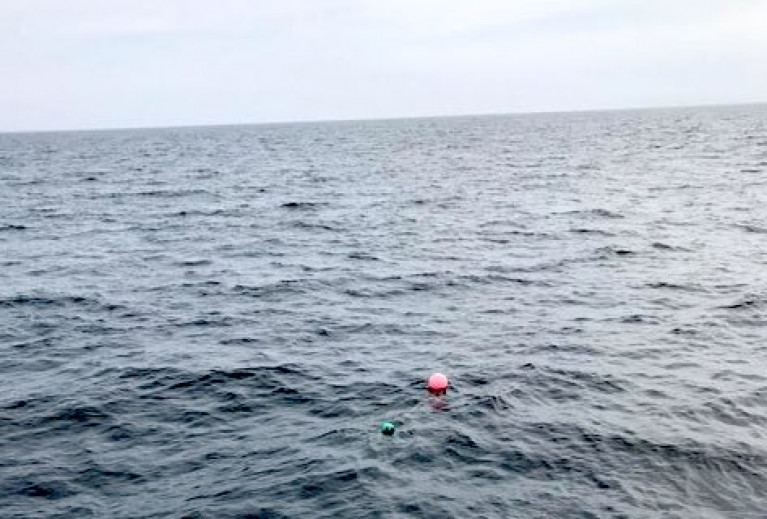Aran island fisherman Bertie Donohue says he is “amazed” at the resilience of the two young Galway women who survived a 15-hour ordeal after their paddleboards were swept across Galway bay last week.
“They are two very tough, very brave girls – and I don’t know how they managed to hold on to my fishing gear in that location,” the crab fisherman from Cill Éinne on Inis Mór says.
When he heard that Sara Feeney (23) and Ellen Glynn (17) had secured themselves to floats off the Aran island of Inis Oírr, after being carried across the bay last Wednesday night, he knew immediately this was his crab gear.
 Aran fisherman Bertie Donohue and the sling that Ellen Glynn and Sara Feeney secured boards to
Aran fisherman Bertie Donohue and the sling that Ellen Glynn and Sara Feeney secured boards to
The fisherman, who processes brown crab on Inis Mór, said he had planned to move the gear early last week, but said: “something stopped him”.
 Bertie's boat named Venture
Bertie's boat named Venture
“That was one of three sets of pots I laid off “The Finish”, some two-miles south-west of Inis Oírr, but it was the outer set of gear,” he said.
“If they had missed it, they would be out in the Atlantic,” he said.
 The chart area
The chart area
Mr Donohue said that “what had happened to those two girls could happen to any of us”.
He said their own ability to keep calm had been key to their survival – along with their rescue by fishermen Patrick and Morgan Oliver of Galway RNLI.
When the two exhausted women fully realised their location after fog lifted last Thursday morning, the Cliffs of Moher were just south of them and the wide Atlantic just west.
The 20 knot north-easterly had carried them diagonally across Galway Bay towards Black Head, during a night of heavy rain and lightning.
Wearing only buoyancy aids over their swim togs, they tried to paddle up to Inis Oirr with the wind still against them.
It was at that point that they spotted the floats and grabbed hold of the gear, securing the sling through the webbing on the boards.
They had already wisely lashed the two boards together when they were carried south-west of Furbo beach by the offshore wind.
“I don’t know how they survived that night as there was awful weather, and that north-easterly is cold and makes a very bad chop in the sea when you are away from shore,” Mr Donohue said.
“That is a very exposed location, and I only set the gear there to help another fisherman, who lost 200 pots last October when his boat sank in Inis Oírr,” he explained.
“And his boat sank in a north-easterly, the same wind those girls had, which just shows you how tough that weather is,”Mr Donohue said.
Mr Donohue lifted the pots at the weekend, and there was a good catch of crab.
The two women and their families, from Knocknacarra, Galway, have paid tribute to all those who participated in the search and the rescue, and have said they cannot thank the Olivers enough.
Three Irish Coast Guard helicopters, RNLI Aran and Galway lifeboats, Doolin and Costello Bay, Garda, the Civil Defence, local fishing and leisure craft, along with Galway Flying Club, Aer Arann and many volunteers had participated, and it was co-ordinated by Valentia Marine Rescue Sub-Centre.
Former Irish Coast Guard search and rescue pilot Dave Courtney, author of the memoir Nine Lives, says that questions need to be asked as to why the rescue took so long.
The Irish Coast Guard has said the search for the two women covered a 200 square mile sea area.
It said it was using SARMAP - the US software used effectively by Valentia Coast Guard in 2011 to track the probable location of the crew of the yacht Rambler which capsized in the Fastnet yacht race off West Cork.
“ The search was just moving into the south-west of the Inis Oirr sector ...with both aviation and surface assets when the fishing vessel Johnny Ó came upon them. It is highly likely they would have been detected within the following one to two hours as it was daylight,”it says.































































